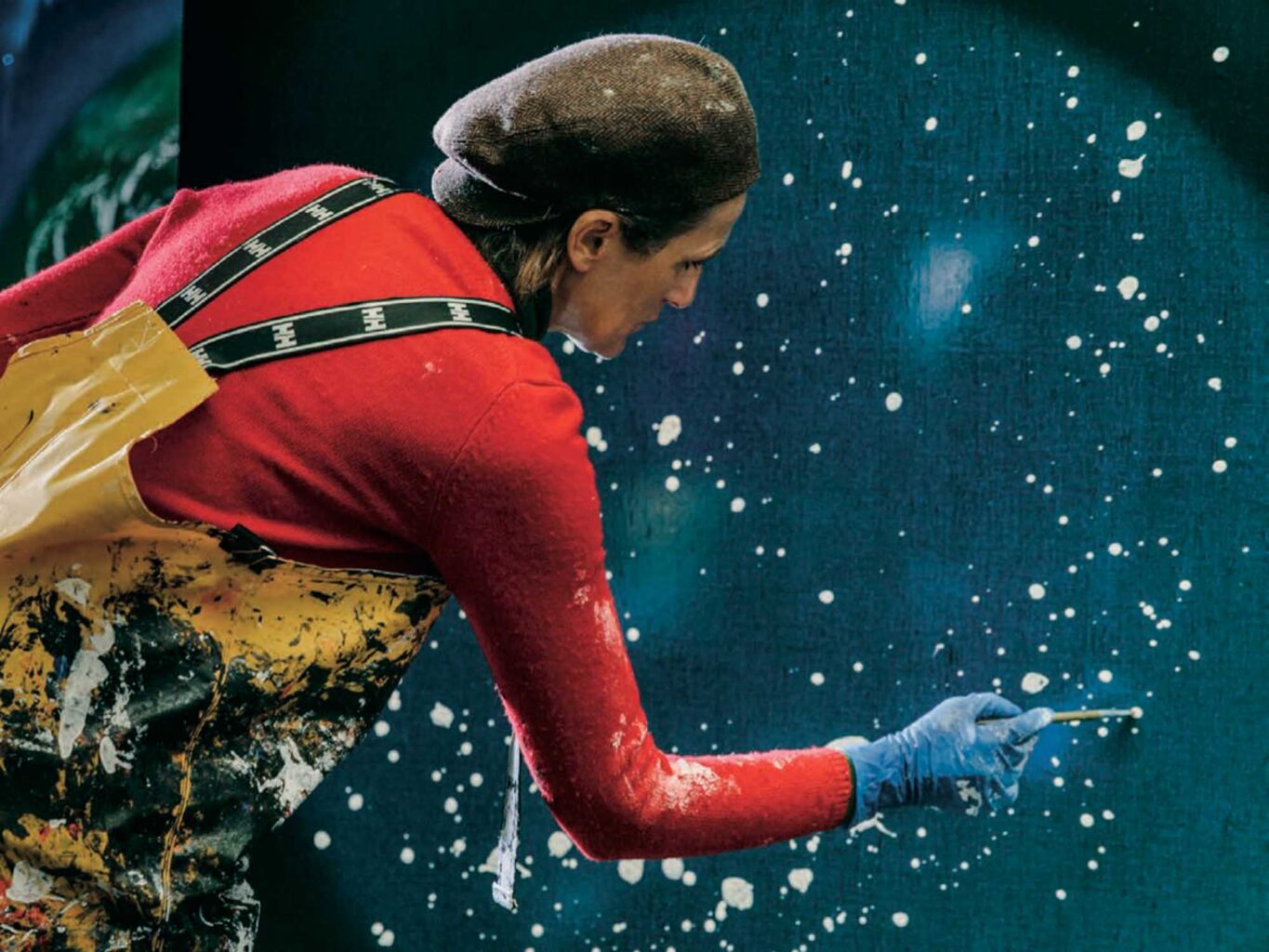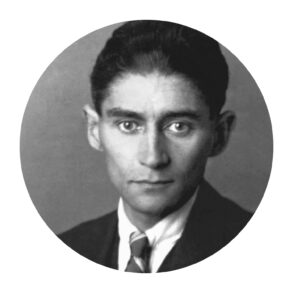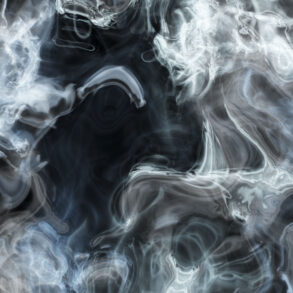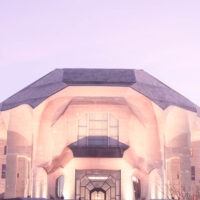Fabienne Verdier found her inspiration for her artistic and spiritual path in China. However, today she often cites Novalis, Goethe, Jakob Böhme, Meister Eckhart, etc. Those who delve into the work of the French artist will notice similarities with Goethe’s method. Her works have recently been shown in two remarkable exhibitions, one of which – at the Museum Unterlinden in Colmar – has been extended until May 2023.
The great painter Zao Wou-Ki, like the writer François Cheng, came to France from China. Fabienne Verdier, on the other hand, traveled from west to east. After studying at the Toulouse School of Art, she went alone to China to study calligraphy with the last great Chinese masters. In an autobiography1 she describes these hard but essential ten years. Such cosmopolitan personalities achieve a synthesis that transcends cultural boundaries and reaches a universalism that can touch the essential.
Two recent exhibitions, ‹In the Eye of the Cosmos› in Saarbrücken2 and ‹Le Chant des étoiles› at the Musée Unterlinden of Colmar3, offered the opportunity to delve deeper into the work of Fabienne Verdier. The titles of these exhibitions point to the core of Verdier’s research, expressed in the sentence of Novalis: «We dream of journeys through space: is not the universe then within us?»

In Resonance with Place and Time
The work of Fabienne Verdier can be deeply moving. The power of the almost overwhelming, but always centered, held images and the beauty of the matter appeal less to the intellect than to the whole person. Each work requires a meditative approach and creates a soul movement: a vortex, a cloud, the fullness of a circle, or a certain cosmic soul quality.
Far from the hubris of artists who claim the entire space for their works, she inserts them into the existing, bringing an original and eminently contemporary touch. At the exhibition in Colmar, the visitor must traverse the entire Musée d’Unterlinden to discover works that resonate with the museum’s collection. The titles of her works are particularly evocative: ‹So the Night›, ‹Seat of Wisdom›, ‹Clairvoyance›, ‹White Energies›, ‹Asceticism› …
The artist’s encounter with Matthias Grünewald’s famous altarpiece in the Unterlinden Museum in Colmar during the Covid pandemic was a shock. She was particularly impressed by the Resurrection of Christ, with its circular colored aura. Grünewald had originally created the altarpiece to help sick people suffering from ergot poisoning. Fabienne Verdier wondered how to depict the global event of Covid to help souls cross the threshold. Through further research and personal experience, she noticed that each of us has our own rainbow. She came to understand that after death, everyone becomes a colored circle in space and then returns to their star. Working with a team of language specialists, she also found that many ancient first names have a direct connection to the cosmos, sky, night and stars. So she created the series ‹76 Rainbows›, the culmination of the Colmar exhibition, in which each painting represents a cosmic first name, and based on this she named the exhibition ‹Star Song› (Le Chant des étoiles).

The Inner Process
Fabienne Verdier’s journey has seen her abandon easel painting and instead develop a new technique. In it, she works on large canvases on the floor, painting vertically with huge horsehair brushes tethered to the ceiling. This technique allows her to incorporate the whole body, head, heart and will into the painting. Similar to the stirring of the Biodynamic preparations horn manure and horn silica, the person becomes one with the movement through his whole body and creates the ethereal between heaven and earth. Fabienne Verdier explored, among other things, the effect of music, the germinal power of buds, and the telluric forces emanating from Mount Sainte Victoire.
«When I paint the tree, I become the tree; when I paint the water, I become the water,» she writes in her autobiography. In her inner approach one can recognize the four stages of Goetheanism as described by Rudolf Steiner, for example: astonishment, awe, wise harmony with the laws of the world, and finally surrender.4 In the book of conversations published in 2007 by the poet Charles Juliet5, she describes this inner path. She begins by «sweeping at the doors of being,» becoming «attentive, receptive to the living» (p. 55). Thus she opens herself to the present. «Then I wander through the garden in the blue hour of the sky, going from stone to stone on the way to the studio. In the apparent banality of the day I sniff the fresh air […]. I am in bliss, lingering on the contemplation of things as they are.» (p. 33) It is gratitude that fosters creativity: «One is transported into a blissful exaltation in which gratitude again ‹wells up and overflows.› If one takes up the brush at such moments, the ink alone will find its destiny.» (S. 66)
And it is in the heart that she finally discovers a new space of insight and creativity (p. 58): «There is a space in the heart where suchness6 shows itself. […] A sovereign territory where our life impulses bring matter to life. A place of fleeting awakening to the sublime of nature, not to imagined beauty. An island of adventure capable of inwardness beyond emotion, capable of touching immanent truths. There, all metamorphoses are possible.»
Footnotes
- Fabienne Verdier, Signs of Silence, an Initiation in China. Edition Spuren, Winterthur 2017.
- The exhibition was on view until February 2023.
- The exhibition was extended until May 2023.
- Charles Juliet, Entretien avec Fabienne Verdier. Paris, Albin Michel 2007.
- Rudolf Steiner, The World of the Senses and the World of the Spirit. GA 134, lecture of 27.12.1911.
- suchness: a possible translation of ‹tahata›, a term from Buddhism that denotes the form of true reality.














Hi ,
I wanted to read the article ‘There is a space in the heart’. Every month when I decide on an article to read I always receive the message ‘You have read your free monthly article’ while I never have access to read anything. I can’t afford a subscription at the moment but would love access to the monthly free article if possible. Thanks much,
Nadia
perhaps the most effective pathway forward for Anthroposophy in this century is the substantial incorporation/application of Biodynamic Agriculture .. all the fuss about transmutation of humanity into machine/computer based existence will soon be exposed when these machines/computers and their artificial intelligence requires nourishment or energy .. food production is still humanities primary discipline what when where and how to plant anything is not an applied algorithm ..